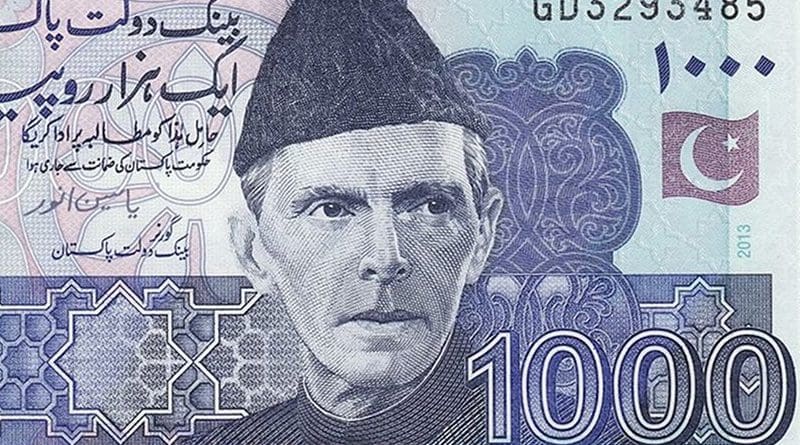Unlocking Pakistan’s Economic Potential – OpEd
This year Pakistan celebrated Independence Day (August 14), when the clouds of imminent default were getting thicker. Despite having complete faith in the economic resilience of Pakistan, people are worried about the ballooning ‘confidence deficit. They believe that breaching current account deficit as well as budget deficit is possible but overcoming confidence deficit may take years.
The brighter side of the story is that International Monetary Fund (IMF) is likely to release promised branch of about US$1.2 billion. This will pave the way for the inflow of foreign exchange from friendly countries and other multilateral lenders. At present the biggest support is coming from overseas Pakistanis who are sending around US$2.5 billion every month.
In last financial year, exports of textiles and clothing touched record high level. Now it is the responsibility of the policy planners to ensure there is no dip in export of textiles and clothing. The chances are bright because Pakistan is likely to get certain concessions under GSP Plus system.
It is my estimate that Pakistan is capable of earning more than US$50 billion per annum from export of textiles and clothing. However, to achieve this, Pakistani farmers have to double indigenous production of cotton to take textiles and clothing exports to the next level.
Since Pakistan’s exports of textiles and clothing are concentrated in United States and European countries, improvement in quality standards can boost ‘Unit Price Realization’ significantly. However, the target can only be achieved by ensuring uninterrupted supply of electricity and gas to the manufacturers at affordable cost.
A cursory look at the reasons of burgeoning current account deficit shows that import bill on energy products and edible oil are the two culprits. While boosting of oil and gas may take some time, shortfall of edible oil can be overcome by focusing cultivation oil seeds that include cotton, sunflower and canola. Nearly 50% reduction in the prices of palm oil is likely to reduce import bill of edible oil significantly. Similarly, crude oil prices are on the downwards trajectory.
This year Pakistan has been forced to import wheat due to its production below the target. Some analysts are of the view that if 20% wheat that goes stale before reaching the market can be saved, the country may not need to import the staple food, but extra foreign exchange would be earned by exporting the saved quantity.
Analysts fear that a significant quantity of wheat is smuggled to the neighboring countries. Pakistan can earn substantial foreign exchange if wheat and other food items are exported through the official channel.
Having reached at the consensus that Pakistan has to produce exportable surplus, supporting policies have to be evolved and implemented. These include operating fertilizer plants at or above name plate capacity. It is necessary to bring it at record that as against an installed capacity capable of 7 million tons urea annually, the country produced around 6 million tons. An additional one million tons of urea can be produced by supply ‘full required’ quantity of gas to urea plants.
At the prevailing global prices of urea, Pakistan can earn significantly foreign exchange by exporting urea, part of this may be used to import LNG or meeting the difference in cost of generation when furnace oil is used.
At stated earlier saving the wheat from going stale or containing smuggling its smuggling is possible. Government has to ensure construction of modern storage silos capable of storing up to 50 million tons to store wheat, rice and maize.
The central bank has already announced an incentive ladden plan for the construction of silos. It is necessary to share the news that warehouses have issued warehouse house receipts worth PKR100 billion electronically. However, this is only tip of the iceberg. Now it is the responsibility of the Government of Pakistan, central bank and commercial banks to convince the farmers to store their produce at the modern silos.
It is often said that indigenous production of oil and gas is constantly doing down. This process can be decelerated by drilling more exploratory and production wells. Along with this refineries operating in the country have to be up gradated to produce higher distillates.
This year Pakistan has once again faced floods, which has once again highlighted the need for the construction of dams. It is known to all and sundry that Pakistan is capable of producing more than 40,000MW electricity from hydel plants.
A lot of time has been wasted in finding justifications for some disputed dams. Analysts are of the view that Pakistan should establish ‘run of the river, type hydel power generation units. These are not only low cost but can be constructed within shorter span of time.
The added advantage is that cost of electricity produced from hydel facilities is one tenth of the cost of electricity produced at thermal plants. These hydel power plants can be constructed closer to the point of consumption. There will be no need to construct long transmission lines and transmission. The additional advantage is reduction in the transmission and distribution (T&D) losses.

